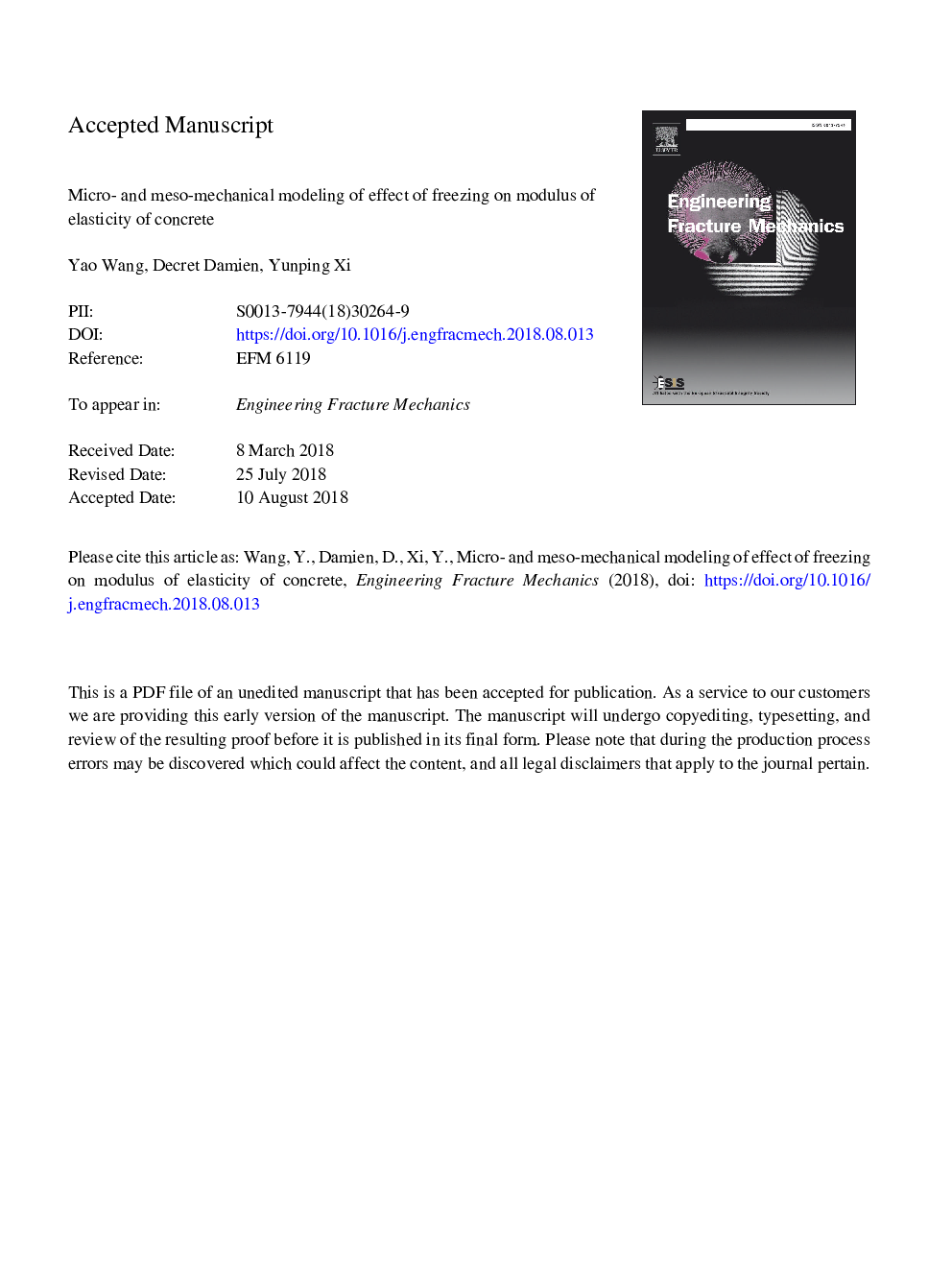| Article ID | Journal | Published Year | Pages | File Type |
|---|---|---|---|---|
| 11003869 | Engineering Fracture Mechanics | 2018 | 51 Pages |
Abstract
The variation of modulus of elasticity of concrete under low temperatures depends on the amount of ice formed in the material and the extent of the damage induced by the formation of ice. There are two opposing effects at play under continuous cooling. One is the stiffening effect due to the formation of solid ice in pores because the stiffness of ice is higher than that of liquid pore water, and the other is the weakening effect of the damage process due to the formation of excessive amount of ice in pores which generates a high pressure on the pore wall. When the stiffening effect is dominant, the overall stiffness of the material increases; and when the weakening effect is dominant, the overall stiffness of the material decreases. There is a turning point in temperature representing the balanced state of the two opposing effects. The turning point depends on pore size distribution of cementitious materials. A theoretical model, based on the Mori-Tanaka model, was developed to estimate the modulus of elasticity of concrete under low temperatures. The model is based on micromechanics, pore size distribution, freezing curve of water in the pores of various sizes, and damage-plasticity in cement paste. The model predictions showed that both opposing effects can be characterized by the present model. Model predictions show promising agreement with limited experimental data available in the literature.
Related Topics
Physical Sciences and Engineering
Engineering
Mechanical Engineering
Authors
Yao Wang, Decret Damien, Yunping Xi,
